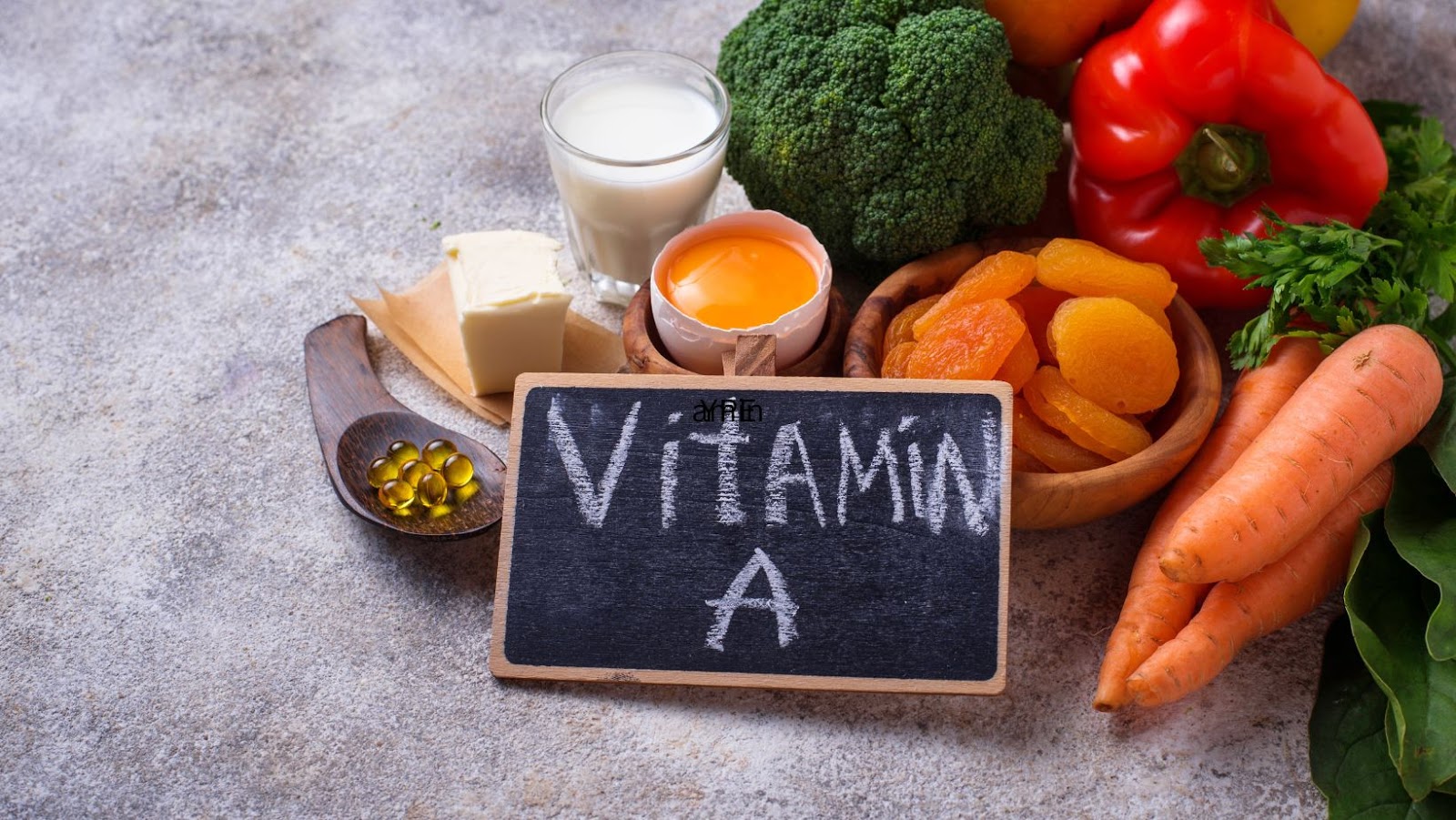
Vitamin A is an essential nutrient for health and development. It is found in a wide range of food sources, including fruits, vegetables, meat, and dairy products. While it is important to maintain an adequate intake of vitamin A, too much of it can be toxic. In this article, we will discuss which of the following statements regarding vitamin A is false. We will look at the facts about vitamin A, and discuss the potential risks and benefits associated with it.
Which of the following statements regarding vitamin a is false?
Vitamin A is a fat-soluble vitamin that plays an important role in vision and immune system health. It is found naturally in a variety of foods, including fruits, vegetables, meat, and dairy products. It can also be taken as a dietary supplement in the form of retinol or beta carotene.
The recommended daily value for vitamin A is 900 micrograms (mcg) for adult males and 700 mcg for adult females. While the body needs only a small amount of the vitamin, not getting enough can have important consequences. Symptoms of deficiency may include loss of appetite, night blindness, dry skin and hair loss.
Although it is mostly known for its role in vision health, vitamin A also supports healthy cell growth throughout the body and helps regulate gene expression associated with normal development and immunity defence mechanisms. Additionally, multiple studies have associated increased dietary intake of this essential nutrient with improved cognitive performance as well as reduced risk of some cardiovascular diseases and type 2 diabetes.
Sources of Vitamin A
Vitamin A is an essential nutrient important for proper vision, immune function, and cell growth. It is found in many everyday foods, including fruits, vegetables, meat, and dairy products. However, the amount and type of Vitamin A present in each food can vary. In this article, we’ll explore the different sources of Vitamin A, including their nutrient profile and health benefits.
Fruits and Vegetables
Fruits and vegetables are one of the major sources of vitamin A. Plant-based foods such as carrots, spinach, kale, cantaloupe, sweet potato, winter squash, and red bell peppers contain carotenoids which are converted by the body into vitamin A. In addition to these well-known choices for Vitamin A content, mangoes and apricots are also excellent fruit sources of this essential nutrient. Other nutritional options include dark green leafy vegetables like collards and turnip greens. Broccoli and butternut squash also count among the vegetable sources of Vitamin A. Just ½ cup of boiled spinach meets 100% of your daily needs for Vitamin A.
Meat and Dairy Products
In addition to plants, many animal sources of Vitamin A also exist including meat and dairy products. Meat sources which are especially high in Vitamin A include beef liver, lamb liver, chicken liver, and egg yolks. Dairy sources of Vitamin A include yoghurt, cheese, and whole fat milk.
Although fatty fish such as salmon are not rich in Vitamin A directly, they are often a significant source of vitamin A storage compounds termed retinol esters due to their content of the preformed vitamin A derivatives retinyl esters or retinyl palmitate.
Benefits of Vitamin A
Vitamin A is an essential nutrient that plays an important role in the body. It helps keep vision, skin, and immune system healthy, as well as playing a role in gene expression. It is found in many different types of food, including fruits and vegetables, dairy products, and meats. Let’s take a closer look at the benefits of Vitamin A and why it is important for health and wellbeing.
Supports Eye Health
Vitamin A is essential for maintaining healthy vision. It’s an important component of the eye’s light-sensing system in the retina, and it helps to protect the surface of the eye from dehydration and infection. Vitamin A can help maintain normal vision in dim light, reduce dry eyes, reduce inflammation and damage to the eyes by free radicals, and prevent age-related macular degeneration (AMD). Getting enough vitamin A through your diet is important for long-term eye health. Vitamin A plays a role in protecting cells from free radical damage associated with ultraviolet radiation from the sun and other sources. This can help prevent cataracts, which is clouding of the lens or cornea that often leads to sight loss. Foods rich in vitamin A include sweet potatoes, carrots, kale, spinach, cantaloupe melon, squash and eggs. Eating a balanced diet that contains enough vitamin A will help you maintain good vision throughout your lifetime.
Enhances Immune Function
Vitamin A is essential for a healthy immune system. It helps the immune system differentiate between normal body cells and foreign invaders such as viruses and bacteria. Vitamin A enhances the ability of the white blood cells to recognize and fight off infections, thereby minimising illness. Vitamin A also stimulates the production of antibodies, which are proteins responsible for targeting and neutralising foreign agents, such as bacteria and viruses. In addition to its role in enhancing immunity, vitamin A also strengthens mucous membrane barriers that prevent invading agents from entering the body.
Promotes Healthy Skin
Vitamin A is a vital nutrient for boosting the overall health of our skin. It promotes healthy cellular activity, reduces inflammation and helps keep skin soft and moist. One of the essential fatty acids in vitamin A, linoleic acid, is important for skin health. Linoleic acid plays an important role in regulating oil production in the glands, which can help reduce acne breakouts. Vitamin A also encourages normal cell turnover and supports skin health by encouraging new cells to reach the surface layer more quickly and effectively. For people with dry or sensitive skin conditions, adequate intake of vitamin A and its derivatives can help improve hydration levels in the skin and reduce inflammation that can cause itching or discomfort.
Risks of Vitamin A
Vitamin A is essential to our diet and helps to regulate many important functions in the body, however it is important to recognize the potential risks associated with consuming too much. In this article, we will look at which of the following statements regarding vitamin A is false, as well as other potential health risks that can occur when consuming high levels of vitamin.
Toxicity
Vitamin A is an essential nutrient for good health, but when consumed in excess it can have serious side effects. Consuming extremely high levels of vitamin A can cause liver damage, headaches, joint pain and nausea. Additional symptoms may include convulsions, impaired vision or blurred vision, dry and itchy skin, fatigue and irritability. Long-term toxicity can lead to more serious complications such as abnormal skeletal development and possible defects or abnormalities in the baby during pregnancy.
Consuming too much vitamin A should be avoided if possible since food sources are usually the most natural source to obtain this type of nutrient. However, caution should be taken if taking dietary supplements since they are much more likely to cause harm at deranged doses due to an inability for the body to metabolise the excessive amount properly. It is recommended for adults not to exceed a daily intake of 8,000 IU (International Units). Taking higher doses than that could result in toxicity which could potentially be fatal so it is important to keep doses at a safe level.
It is also important to note that there are some medications with interactions that can increase the risk for toxicity when coupled with high levels of vitamin A consumption.
Therefore it is essential to talk with your trusted doctor and pharmacist before combining any medications with a high vitamin A diet or supplements regimen to ensure you are taking all necessary precautions regarding potential risks associated within those combinations.
Side Effects
When taken for extended periods or in doses that are too high, vitamin A can be toxic and lead to a number of health complications. Some of the most common side effects associated with vitamin A toxicity include headaches, vomiting, fatigue, joint pain, dry skin and lips, blurred vision, liver damage, decreased appetite and hair loss. Long-term cases of vitamin A toxicity can also lead to other more serious issues such as birth defects.
Due to potential risks associated with excess consumption of vitamin A, it is important to be mindful if you’re taking any supplement containing this nutrient as part of your regular routine. If you have any questions or concerns about the dosage or side effects related to your Vitamin A intake, it is always best to talk it over with your doctor before making any changes in your diet or supplemental vitamin routine.
Summary
Vitamin A is an essential nutrient that is found in a variety of foods, including fruits, vegetables, dairy products, and meat. It is critical for the proper functioning of many bodily processes, such as vision, cell growth, and immunity. Despite its importance, there are many misconceptions about vitamin A, especially when it comes to its sources and effects on health. In this article, we will take a closer look at vitamin A, explain which of the following statements regarding it are false, and provide some suggestions for meeting your daily needs.
Which of the Following Statements Regarding Vitamin A is False?
Vitamin A is an essential nutrient found in a wide variety of foods, including fruits and vegetables, dairy products, and animal products. Vitamin A plays an important role in vision, immune system health, and the production of healthy skin cells.
Unfortunately, many people consume too little vitamin A on a daily basis and may be deficient in this vital nutrient. Even though most adults should get 700 mcg or 2333 IU per day of vitamin A from food alone to meet their needs for this micronutrient, fewer than 10 percent of adults meet the daily recommendation through dietary sources alone.
Which of the following statements regarding Vitamin A is false?
A) Vitamin A helps support good vision
B) Eating fresh fruits and vegetables can help provide enough vitamin A
C) Vitamin A is only found in animal products
D) Dietary sources are sufficient to meet most adult’s daily requirements for vitamin A
The answer is C), as while it is true that animal-based foods are a great source of vitamin A, many common fruits and green leafy vegetables such as carrots and spinach also have significant amounts of this essential nutrient.















